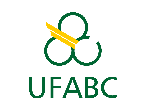Banca de DEFESA: JÚLIA KERSUL FARIA
Uma banca de DEFESA de MESTRADO foi cadastrada pelo programa.STUDENT : JÚLIA KERSUL FARIA
DATE: 08/12/2022
TIME: 14:00
LOCAL: Remota GoogleMeet
TITLE:
Wetlands constructed with a support medium of digested sludge from a water treatment plant applied to the removal of nutrients from synthetic sewage
PAGES: 80
BIG AREA: Engenharias
AREA: Engenharia Sanitária
SUBÁREA: Tratamento de Águas de Abastecimento e Residuárias
SPECIALTY: Processos Simplificados de Tratamento de Águas
SUMMARY:
Constructed Wetland Systems (CW) are wastewater treatment systems inspired by natural ecosystems, in which nutrient removal is based especially on natural purification, biological, physical and chemical removal. They are decentralized, low-cost systems that can promote adequate rates of removal of nitrogen, phosphorus and organic matter. In addition, they can work together with new technologies in order to improve effluent treatment. The microbial fuel cell (MCC) is a technology that allows the generation of energy during treatment, in which groups of bacteria release electrons and protons during the conversion of existing compounds in the effluent. This system can work together with the SAC. SAC and SAC-CCM can have different types of media support. The specificity of this material can help in the treatment of effluent. Recent studies show that the sludge from Water Treatment Stations (WTA) has a high phosphorus adsorption capacity. In this context, this study aimed to evaluate the removal of pollutants in SAC and SAC-CCM systems with LETA support medium. 6 systems were analyzed: 3 of gravel and 3 of LETA, in TDH of 8, 5, 3 and 1.5 days for SAC, and 1.5 days for SAC-CCM. Two systems had micro-aeration (one from each support medium). The organic matter removals (COD) were 88.1% in the gravel support medium and 92.3% for the LETA. For ammoniacal nitrogen (N-NH3), systems with aeration at 0.8 mgO2.L-1.min-1 produced an effluent with low concentrations, below 10 mg. L-1. As for total phosphorus (PT) and phosphate (PO43-), the best removal rates were in systems with LETA, with concentrations below 0.1 mg.L-1. In the SAC-CCM mode, energy generation measurements were performed, with the maximum energy generated being 25.12 mW/m2 for the SAC with gravel and 26.16 mW/m2 for the SAC with LETA. Molecular biology analysis by the FISH (Fluorescence in situ hybridization) method demonstrated that aerated systems promoted the growth of ammonia oxidizing bacteria (BOA) and nitrite oxidizing bacteria (BON), and also demonstrated that LETA and the strategy of inoculation developed the growth of phosphorus accumulating organisms (PAO), which acted in the biological removal of phosphorus.
BANKING MEMBERS:
Presidente - Interno ao Programa - 2342998 - RODRIGO DE FREITAS BUENO
Membro Titular - Examinador(a) Interno ao Programa - 1809833 - TATIANE ARAUJO DE JESUS
Membro Titular - Examinador(a) Externo à Instituição - FABIO CAMPOS - USP
Membro Suplente - Examinador(a) Interno ao Programa - 1646410 - ROSELI FREDERIGI BENASSI
Membro Suplente - Examinador(a) Externo ao Programa - 2197500 - MELISSA CRISTINA PEREIRA GRACIOSA




